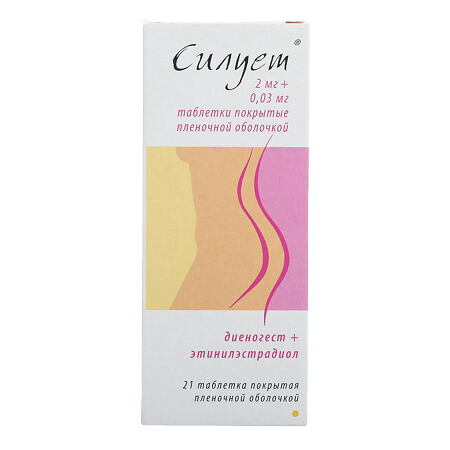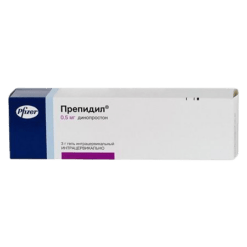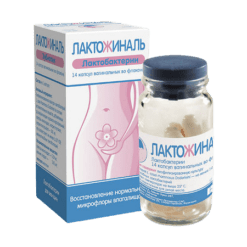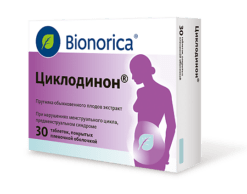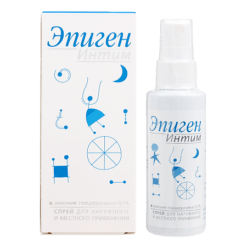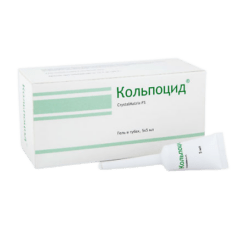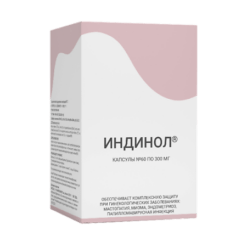No products in the cart.
Silhouette, 2 mg+0.03 mg 21 pcs
€28.96 €24.13
EAN: 5997001362723
SKU: 216361
Categories: Contraceptive, Gynecology and Obstetrics, Hormonal, Medicine
Description
Pharmaceutical group:
Contraceptive (estrogen+gestagen).
Pharmacological effects:
Siluet® is an oral combination medicine with antiandrogenic effect, containing ethinyl estradiol as estrogen and dienogestrogen as progestagen. The contraceptive effect of Siluet® is caused by various factors, the most important of which are inhibition of ovulation, increase in cervical mucus viscosity, change of tubal peristalsis and endometrial structure. The antiandrogenic effect of the combination of ethinylestradiol and dienogestrone is based on a decrease in the concentration of androgens in the plasma.
In repeated studies it has been shown that administration of a combination of ethinylestradiol and dienogest resulted in levelling the symptoms of mild to moderate acne and had positive results in patients with seborrhea.
Dienogest is a norethisterone derivative that has 10-30 times lower affinity for progesterone receptors in vitro compared to other synthetic progesterones. Dienogest has no significant androgenic, mineralocorticoid or glucocorticoid effects in vivo.
When administered in isolation at a dose of 1 mg/day, dienogestr inhibits ovulation.
Pharmacokinetics:
Ethinylestradiol:
Intake
Ethinylestradiol is rapidly and completely absorbed in the small intestine after oral administration. Cmax in plasma (67 pg/ml) is reached after 1.5-4 hours. During primary passage through the liver, a significant portion of ethinylestradiol is metabolized. Absolute bioavailability is approximately 44%.
Distribution
Ethinylestradiol is almost completely (about 98%), although non-specific, bound to albumin. Ethinylestradiol increases the plasma concentration of sex hormone binding globulin (hSPH). The apparent Vd is 2.8-8.6 L/kg.
Css is reached during the second half of the treatment cycle, and the serum concentration of ethinylestradiol increases 2-fold.
Metabolism
Ethinylestradiol undergoes conjugation in the intestinal mucosa and in the liver. The main route of metabolism of ethinylestradiol is aromatic hydroxylation, but its metabolism also produces a large number of hydroxylated and methylated derivatives in free, glucuronated, and sulfated forms. Clearance is approximately 2.3-7 ml/min/kg.
Extraction
Reduction of plasma concentration of ethinylestradiol occurs in two stages: the first stage of elimination half-life is 1 hour, the second – 10-20 hours. Ethinylestradiol is not excreted unchanged. Ethinylestradiol metabolites are excreted by the kidneys and liver in a ratio of 4:6. The T1/2 of the metabolites is about 24 h.
Dienogest:
Intake
After oral administration, it is quickly and completely absorbed in the intestine. Cmax in plasma (51 pg/ml) is reached after 2.5 h. Absolute bioavailability when concomitantly administered with ethinylestradiol is 96%.
Distribution
Dienogest is bound to plasma albumin and does not bind to hGH and globulin binding corticosteroid hormones. The fraction of free dienogest in plasma is 10%, while 90% is nonspecifically bound to albumin. The apparent Vd is 37-45 L.
Plasma HSPH concentration has no effect on the pharmacokinetics of dienogest. The plasma concentration of dienogest is increased 1.5-fold and the Css is reached within 4 days.
Metabolism
Dienogest is mainly metabolized by hydroxylation, the alternative route being glucuronidation. Its metabolites are inactive and rapidly eliminated from plasma, so no significant amounts of metabolites can be detected in blood plasma, this does not apply to unchanged dienogest. Total clearance after a single dose is 3.6 l/h. T1/2 of dienogest is about 9 h. A small amount is excreted unchanged by the kidneys. After oral administration of 0.1 mg/kg excretion by the intestine and the kidneys has a ratio of about 3.2. When administered orally 86% is excreted within 6 days, of which 42% is excreted within the first 24 hours, mainly by the kidneys.
Indications
Indications
oral contraception;
treatment of mild to moderate acne when local treatment is ineffective in women requiring contraception.
Pharmacological effect
Pharmacological effect
Pharmaceutical group:
contraceptive (estrogen + gestagen).
Pharmaceutical action:
Siluet® is an oral combination drug with an antiandrogenic effect, containing ethinyl estradiol as an estrogen and dienogest as a progestogen. The contraceptive effect of the drug Siluet® is due to various factors, the most important among them are inhibition of ovulation, increased viscosity of cervical mucus, changes in peristalsis of the fallopian tubes and endometrial structure. The antiandrogenic effect of the combination of ethinyl estradiol and dienogest is based on a decrease in plasma androgen concentrations.
Repeated studies have shown that taking a combination of ethinyl estradiol and dienogest led to the elimination of symptoms of mild to moderate acne and had a positive result in patients with seborrhea.
Dienogest is a derivative of norethisterone, which has a 10-30 times lower affinity for progesterone receptors in vitro compared to other synthetic progesterones. Dienogest does not have significant androgenic, mineralocorticoid or glucocorticoid effects in vivo.
When administered alone at a dose of 1 mg/day, dienogest inhibits ovulation.
Pharmacokinetics:
Ethinyl estradiol:
Suction
Ethinyl estradiol after oral administration is quickly and completely absorbed in the small intestine. Cmax in plasma (67 pg/ml) is achieved after 1.5-4 hours. During the initial passage through the liver, a significant part of ethinyl estradiol is metabolized. Absolute bioavailability is approximately 44%.
Distribution
Ethinyl estradiol is almost completely (about 98%), although nonspecific, bound to albumin. Ethinyl estradiol increases plasma concentrations of sex hormone binding globulin (SHBG). Apparent Vd is 2.8-8.6 l/kg.
Css is achieved during the second half of the treatment cycle, and the concentration of ethinyl estradiol in the serum increases 2-fold.
Metabolism
Ethinyl estradiol undergoes conjugation in the intestinal mucosa and in the liver. The main route of metabolism of ethinyl estradiol is aromatic hydroxylation, but its metabolism also leads to the formation of a large number of hydroxylated and methylated derivatives in free, glucuronidated and sulfated forms. Clearance is approximately 2.3-7 ml/min/kg.
Removal
The decrease in the concentration of ethinyl estradiol in plasma occurs in two stages: the first half-life is 1 hour, the second is 10-20 hours. Ethinyl estradiol is not excreted in unchanged form. Metabolites of ethinyl estradiol are excreted by the kidneys and liver in a ratio of 4:6. T1/2 of metabolites is about 24 hours.
Dienogest:
Suction
After oral administration, it is quickly and completely absorbed from the intestines. Cmax in plasma (51 pg/ml) is achieved after 2.5 hours. Absolute bioavailability when taken simultaneously with ethinyl estradiol is 96%.
Distribution
Dienogest binds to plasma albumin and does not bind to SHBG and corticosteroid hormone-binding globulin. The fraction of free dienogest in plasma is 10%, while 90% is nonspecifically bound to albumin. Apparent Vd is 37-45 l.
The concentration of SHBG in plasma does not affect the pharmacokinetics of dienogest. The concentration of dienogest in plasma increases 1.5 times, and Css is achieved within 4 days.
Metabolism
Dienogest is primarily metabolized by hydroxylation, with an alternative route being glucuronidation. Its metabolites are inactive and are quickly eliminated from plasma, therefore it is not possible to detect metabolites in significant quantities in blood plasma, this does not apply to unchanged dienogest. The total clearance after a single dose is 3.6 l/h.
Removal
T1/2 of dienogest is about 9 hours. A small amount is excreted unchanged by the kidneys. After oral administration of 0.1 mg/kg, excretion by the intestines and kidneys has a ratio of about 3.2. When taken orally, 86% is excreted within 6 days, of which 42% is excreted within the first 24 hours, mainly by the kidneys.
Special instructions
Special instructions
Before starting or resuming taking the drug Siluet®, it is necessary to collect a medical history (including family history), and also exclude pregnancy. It is necessary to measure blood pressure and conduct a general examination, taking into account contraindications and precautions. It is necessary to explain to the woman the need to carefully read the instructions for use of the drug Siluet® and follow the recommendations contained therein. The nature of medical examinations, including general medical and gynecological examinations, is determined by the attending gynecologist individually for each woman and is carried out at varying frequencies, but at least once every 6 months. A woman should be warned that oral contraceptives do not protect against HIV infection (AIDS) or any other sexually transmitted disease.
Reduced efficiency
A decrease in the effectiveness of the combination of EE and DNG occurs in the case of, for example, a missed dose, gastrointestinal disorders or when taking concomitant therapy.
Change in bleeding pattern
The use of the drug Siluet®, especially in the first 3 cycles, may be accompanied by the appearance of acyclic spotting/bleeding from the vagina, which can be considered as an adaptation period.
If irregular bleeding is persistent or appears after previous normal regular cycles, non-hormonal causes should be considered and malignancy and pregnancy excluded. In this case, you need to consult a gynecologist.
In some women, withdrawal bleeding may not occur between doses of the drug. If a woman takes Siluet® as directed, pregnancy is unlikely. However, if a woman had violations of taking the drug before the 1st missed withdrawal bleeding or if there were 2 missed withdrawal bleedings, pregnancy should be excluded before continuing to take the drug Siluet®. Herbal preparations containing St. John’s wort (Hypericum perforatum) should not be used in parallel with Siluet® (due to their ability to reduce plasma drug levels and reduce the effectiveness of the combination of DNG with EE).
The use of combined oral contraceptives leads to an increased risk of venous thromboembolism (VTE). The risk of VTE is highest in the 1st year of COC use. The risk of VTE associated with the combination of DNG with EE is less than the risk associated with pregnancy, it is 60 cases per 100,000 pregnancies. VTE is fatal in 1–2% of cases.
Symptoms of arterial or venous thrombotic or thromboembolic complications may include the following conditions:
– unusual unilateral leg pain and/or swelling;
– sudden severe chest pain with possible irradiation to the left arm;
– sudden shortness of breath;
– sudden coughing attack;
– any unusual, severe, prolonged headache;
– sudden partial or complete loss of vision;
– diplopia;
– slurred speech or aphasia;
– dizziness;
– fainting, accompanied by a partial epileptic seizure or without it;
– sudden weakness or significant numbness on one side or in one part of the body;
– movement disorders;
– acute abdomen syndrome.
The risk of venous thromboembolic complications increases:
– with age;
– in the presence of a family history (VTE, which has ever occurred in close relatives and parents at a relatively young age); if a congenital predisposition is possible, the woman should be referred to a specialized specialist to decide on the prescription of the drug Siluet®;
– during prolonged immobilization, after major surgery, any surgery on the legs or after serious injury. In these cases, it is preferable to stop taking the tablets (for elective operations at least 4 weeks in advance) and not resume until 2 full weeks have passed after remobilization. If the drug has not been discontinued in advance, antithrombotic therapy should be prescribed;
– for obesity (body mass index more than 30 kg/m2). There is no consensus on the role of varicose veins or thrombophlebitis of superficial veins in the occurrence and development of venous thrombosis.
The risk of arterial thromboembolic complications or the risk of stroke in women using the combination of DNG with EE increases:
– with age;
– in the presence of dislipoproteinemia;
– presence of hypertension;
– diseases of the heart valves;
– atrial fibrillation;
– smoking – smokers increase the risk of severe cardiovascular complications (such as myocardial infarction, stroke); The risk increases with age and the number of cigarettes smoked.
The presence of one severe or several risk factors for the development of venous or arterial diseases, respectively, may also be a contraindication. The possibility of using anticoagulant therapy should also be considered. Women receiving Siluet® should be warned that they should contact their doctor if they suspect symptoms of thrombosis. In case of suspected or proven thrombosis, the drug should be discontinued. In this case, women need to use other suitable methods of contraception due to the teratogenic effect of anticoagulant drugs (coumarins).
The increased risk of thromboembolism during the postpartum period must be taken into account.
Diseases such as diabetes mellitus, SLE, hemolytic-uremic syndrome, Crohn’s disease, ulcerative colitis, sickle cell anemia, increase the risk of developing venous thromboembolic diseases.
An increase in the frequency and severity of migraine when taking a combination of DNG and EE (which may be a harbinger of cerebrovascular accident) may be an indication for immediate discontinuation of the drug.
Tumors
Some epidemiological studies have reported an increased risk of cervical cancer with long-term use of the combination of DNG and EE (more than 5 years). However, controversy remains about the extent to which these cases are related to sexual behavior and other factors such as human papillomavirus.
Studies have shown a slight increase in the relative risk (RR – relative risk – 1.24) of developing breast cancer in women who used COCs. The increased risk gradually decreases over 10 years after stopping these drugs.
In rare cases, during the use of a combination of DNG and EE, the development of benign liver tumors was observed, and in even more rare cases, malignant ones. In some cases, these tumors have led to life-threatening intra-abdominal bleeding. If severe pain appears in the upper abdominal region, liver enlargement and signs of intraperitoneal bleeding in women taking combinations of DNG and EE, liver tumors should be excluded.
Other states
Women with a current or history of hypertriglyceridemia are at increased risk of developing pancreatitis when using the combination of DNG and EE. Although slight increases in blood pressure have been described in many women taking combinations of DNG and EE, clinically significant increases have been reported rarely.
However, if women with hypertension experience a stable increase in blood pressure while taking COCs, or if sudden increases in blood pressure do not respond to antihypertensive therapy, the drug should be discontinued. If possible, treatment can be continued if normal blood pressure values are achieved with antihypertensive therapy.
Acute or chronic liver disease may require discontinuation of Siluet® until liver function tests return to normal.
Recurrent cholestatic jaundice, which developed for the first time during pregnancy or previous use of sex hormones, requires discontinuation of the combination of DNG and EE.
Although the combination of DNG and EE may have an effect on tissue insulin resistance and glucose tolerance, there is usually no need to adjust the treatment regimen in patients with diabetes. However, women with diabetes should be under close medical supervision while taking Siluet®.
The use of a combination of DNG and EE may worsen the course of Crohn’s disease and ulcerative colitis.
Chloasma may occur periodically, especially in women with a history of chloasma during pregnancy. Women prone to chloasma should avoid prolonged sun exposure and exposure to UV radiation while taking Siluet®.
Laboratory research
The use of contraceptive steroids may affect the results of some laboratory tests, including biochemical indicators of liver, thyroid, adrenal and kidney function, as well as plasma levels of transport proteins, such as corticosteroid hormone binding globulin, and lipid/lipoprotein fractions, parameters of carbohydrate metabolism, coagulation and fibrinolysis. Changes usually remain within normal limits.
Impact on the ability to drive vehicles and operate machinery. The drug Siluet® does not affect the ability to drive a car or use complex equipment. When using the drug, the possibility of visual impairment or dizziness should be taken into account.
Active ingredient
Active ingredient
Dienogest, Ethinyl estradiol
Composition
Composition
1 tablet contains:
active substances:
ethinyl estradiol 0.03 mg,
dienogest 2 mg,
excipients:
lactose monohydrate – 47.66 mg;
corn starch – 10.46 mg;
hypromellose 2910 – 0.65 mg;
talc – 1.6 mg;
polacriline potassium – 1.3 mg;
magnesium stearate – 1.3 mg
film shell:
Opadry II white 85F18422 (polyvinyl alcohol – 1.2 mg, titanium dioxide – 0.750 mg, macrogol 3350 – 0.606 mg, talc – 0.444 mg) – 3 mg
Pregnancy
Pregnancy
Siluet® is contraindicated during pregnancy.
If pregnancy occurs while taking Siluet®, use of the drug should be stopped immediately. The available information regarding the use of Siluet® during pregnancy is too limited to draw conclusions about the negative effects of Siluet® on pregnancy, fetal and newborn health.
Extensive epidemiological studies have not revealed an increased risk of developmental defects in children born to women who took sex hormones for contraception before pregnancy or, through negligence, in early pregnancy.
The drug Siluet® is contraindicated for use in breastfeeding women.
Contraindications
Contraindications
Combined oral contraceptives (COCs) should not be used if a woman currently has any of the conditions/diseases listed below. At the first appearance of any of these conditions while taking COCs, the drug should be stopped immediately:
hypersensitivity to the drug Siluet® or any of its components;
arterial and venous thromboembolic diseases currently or in history (for example, deep vein thrombosis, pulmonary embolism);
thrombosis (arterial and venous) and thromboembolism currently or in history, incl. thrombosis, deep vein thrombophlebitis; pulmonary embolism, myocardial infarction, ischemic or hemorrhagic cerebrovascular disorders;
conditions preceding thrombosis (including transient ischemic attacks, angina pectoris, complicated lesions of the heart valve apparatus, atrial fibrillation, subacute bacterial endocarditis, extended surgery with prolonged immobilization, extensive trauma);
pancreatitis with severe hypertriglyceridemia currently or in history;
porphyria;
jaundice, congenital hyperbilirubinemia (Gilbert, Dubin-Johnson and Rotor syndrome);
sickle cell anemia;
multiple or severe risk factors for venous or arterial thrombosis; history of risk factors for arterial thrombosis:
– diabetes mellitus with vascular complications (angiopathy, retinopathy);
– uncontrolled arterial hypertension (AH);
– severe dislipoproteinemia.
congenital or acquired predisposition to arterial thrombosis, for example resistance to activated protein C, antithrombin III deficiency, protein C, S deficiency, hyperhomocysteinemia and the presence of antibodies to phospholipids (antibodies to cardiolipin, lupus anticoagulant);
smoking over the age of 35;
severe forms of liver disease (including history) until liver function tests normalize;
liver tumors (benign or malignant), incl. in the anamnesis;
hormone-dependent malignant diseases of the genital organs or mammary glands, incl. history or suspicion of them;
bleeding from the vagina of unknown origin;
migraine with local neurological symptoms, incl. in the anamnesis;
epilepsy;
lactase deficiency, lactose intolerance, glucose-galactose malabsorption;
pregnancy;
lactation period.
With caution: the presence of risk factors (varicose veins, heart disease, excess body weight, bleeding disorders) requires a more thorough study before starting to take COCs; smoking under the age of 35 (if a woman cannot quit smoking, another method of contraception should be used, especially if there are other risk factors); the potential risk and expected benefit of using oral contraceptives should be carefully weighed in each individual case if the following diseases, conditions or risk factors exist: dyslipoproteinemia, diabetes mellitus without vascular complications, controlled arterial hypertension, fibrocystic mastopathy, uterine fibroids, endometriosis, multiple sclerosis, history of severe depression, renal dysfunction, contact lens intolerance, Crohn’s disease, ulcerative colitis, phlebitis of the superficial veins, thromboembolism, acute cerebrovascular accident, myocardial infarction at a young age, chronic heart failure, breast cancer in 1st degree relatives; visual impairment (risk of retinal thrombosis), tetany, hypercalcemia, hypokalemia, bronchial asthma, hereditary angioedema, liver disease, idiopathic jaundice during a previous pregnancy, herpes during pregnancy.
Side Effects
Side Effects
From the blood and lymphatic system: rarely – anemia.
From the heart: rarely – tachycardia; very rarely – myocardial infarction.
From the nervous system: often – headache; infrequently – migraine, increased excitability, dizziness; rarely – cerebrovascular accident.
From the organ of vision: rarely – blurred vision, conjunctivitis, dry mucous membrane, intolerance to contact lenses.
From the organ of hearing and labyrinth: rarely – hypoacusia, tinnitus, sudden hearing loss, hearing impairment.
From the respiratory system, chest and mediastinum: rarely – sinusitis, bronchial asthma, bronchitis.
From the gastrointestinal tract: often – nausea, vomiting; infrequently – abdominal pain; rarely – diarrhea, dyspepsia, gastritis, enteritis; very rarely – cholecystitis, cholelithiasis.
From the kidneys and urinary tract: infrequently – urinary tract infection.
From the skin and subcutaneous tissues: infrequently – acne, acneiform dermatitis, exanthema, allergic skin reactions, chloasma, alopecia, erythema multiforme, pruritus, including generalized pruritus, erythema nodosum, vascular purpura; rarely – hypertrichosis, virilism, hyperhidrosis, seborrhea, hyperpigmentation, eczema, dandruff, angioedema, telangiectasia (spider veins).
Metabolism and nutrition: often – weight gain; infrequently – increased appetite, weight loss; rarely – loss of appetite.
Infectious and parasitic diseases: infrequently – vaginitis, vaginal candidiasis; rarely – fungal infections, herpetic lesions of the oral cavity.
From the vascular system: infrequently – hypertension, arterial hypotension, varicose veins, thrombophlebitis of superficial veins; rarely – deep vein thrombophlebitis, thrombosis, pulmonary embolism, hematoma, cerebrovascular accident, hot flashes, pain along the veins.
General disorders and disorders at the injection site: infrequently – feeling of fatigue/malaise, swelling; rarely – flu-like symptoms.
From the immune system: rarely – allergic reactions.
From the genital organs: often – pain and tenderness of the mammary glands, enlargement of the mammary glands; uncommon – acyclic spotting or bleeding, painful menstrual-like bleeding, ovarian cysts, dyspareunia, increased vaginal discharge, endometrial hyperplasia, vaginitis/vulvovaginitis, salpingitis, endometritis; rarely – scanty menstrual-like bleeding, mastitis, fibrocystic dysplasia of the mammary glands, the appearance of mammary gland secretions, leiomyoma, endometritis, salpingitis, cervicitis, vulvovaginal itching, mammary gland lipoma; very rarely – endometrial cancer.
From the mental side: often – decreased mood; rarely – insomnia, sleep disturbances, depression, anorexia, changes in libido, aggression, apathy.
From the musculoskeletal and connective tissue side: often – back pain, cramps in the calf muscles; rarely – arthralgia, myalgia.
The following serious adverse events were observed in women using Siluet®:
– venous thromboembolic disorders;
– arterial thromboembolic disorders;
– AG;
– liver tumors;
– the appearance or aggravation of conditions for which the connection with the use of COCs has not been proven – Crohn’s disease, ulcerative colitis, porphyria, systemic lupus erythematosus, herpes pregnant, Sydenham’s chorea, hemolytic-uremic syndrome, cholestatic jaundice;
– chloasma.
The incidence of breast cancer in women taking COCs increases very little. Because breast cancer rarely occurs in women under 40 years of age, this excess is very small in relation to the overall risk of developing breast cancer. Breast cancer is a hormone-dependent tumor. Known risk factors for breast cancer, such as early menarche, late menopause (after 52 years), nulliparity, anovulatory cycles, etc., indicate the role of hormones in the development of this disease. Hormone receptors play a key role in the cell biology of breast cancer, and estrogens can enhance the effects of growth factors (eg TGF-alpha).
Epidemiological studies have shown a possible causal relationship between long-term use of COCs started at a young age and the development of breast cancer in middle age. However, the use of COCs is only one of many risk factors.
Interaction
Interaction
Interactions due to activation of microsomal enzymes between oral contraceptives and other drugs may lead to breakthrough bleeding and/or decreased contraceptive effectiveness. These effects have been shown for hydantoin, phenobarbital, primidone, carbamazepine and rifampicin.
Such effects are also possible for rifabutin, efavirenz, nevirapine, oxcarbazepine, topiramate, felbamate, ritonavir, griseofulvin and herbal drugs – preparations of St. John’s wort (Hypericum perforatum). The mechanism of these interactions is based on the ability of these drugs to activate microsomal liver enzymes.
According to clinical observations, simultaneous administration with certain antibiotics (such as ampicillin and tetracycline) can lead to a decrease in the effectiveness of contraception; the reason for this phenomenon is unknown.
Women taking the above drugs for a short period of time (up to a week) should, in addition to COCs, temporarily use barrier methods of contraception, for example, during the period of taking one of the drugs listed and 7 days after.
Women taking rifampicin should use barrier methods while taking rifampicin and for 28 days thereafter. If taking a concomitant drug occurs at the end of taking the tablets from the package, taking the next package should be started immediately, without the usual interval.
With long-term use of a concomitant drug that has the ability to activate liver enzymes, the doctor may consider the need to increase the dose of hormonal contraceptives. If this approach results in adverse events (such as irregular bleeding) or reduced effectiveness, another method of contraception must be used.
Based on in vitro studies, DNG has not been shown to inhibit cytochrome P450 at normal concentrations, so an interaction of this nature is not expected.
Drug interactions that increase the clearance of sex hormones can lead to breakthrough uterine bleeding and a decrease in the contraceptive effectiveness of the drug.
Overdose
Overdose
Acute toxicity following oral administration of a combination drug of EE and DNG in overdose is low.
Symptoms: Nausea, vomiting and spotting/bleeding from the vagina may occur.
Treatment: symptomatic, there is no need for special therapy.
Storage conditions
Storage conditions
In a place protected from light, at a temperature not exceeding 25 °C
Shelf life
Shelf life
2 years
Manufacturer
Manufacturer
Gedeon Richter, Hungary
Additional information
| Shelf life | 2 years |
|---|---|
| Conditions of storage | In a light-protected place, at a temperature not exceeding 25 °C |
| Manufacturer | Gedeon Richter, Hungary |
| Medication form | pills |
| Brand | Gedeon Richter |
Related products
Gynecology and Obstetrics
Prepidil, intracervical gel 0.5 mg/3 g syringes with catheter
Buy Silhouette, 2 mg+0.03 mg 21 pcs with delivery to USA, UK, Europe and over 120 other countries.

